
Actors are often lauded for their incredible transformations, disappearing into roles so completely that they become almost unrecognizable. But what unseen work goes into achieving such profound authenticity, especially for dramatic roles that demand immense emotional and intellectual investment? It’s far more than just memorizing lines; it’s a meticulous, multi-layered process of psychological excavation, historical research, and physical conditioning.
For aspiring and seasoned performers alike, mastering a dramatic role requires a systematic approach. It’s about building a character from the ground up, brick by painstaking brick, ensuring every gesture, every word, and every glance feels utterly genuine. We’re breaking down 14 fundamental steps that renowned actors employ to not only understand their characters but truly *become* them, offering practical insights you can apply to your own creative endeavors.
This article isn’t just a peek behind the curtain; it’s a comprehensive guide to the actionable strategies that empower actors to deliver compelling, unforgettable performances. From deciphering the script’s hidden meanings to embodying the subtle nuances of human behavior, these steps provide a robust framework for any dramatic artist looking to elevate their craft and connect deeply with their role. Let’s dive into the foundational work that makes all the difference.
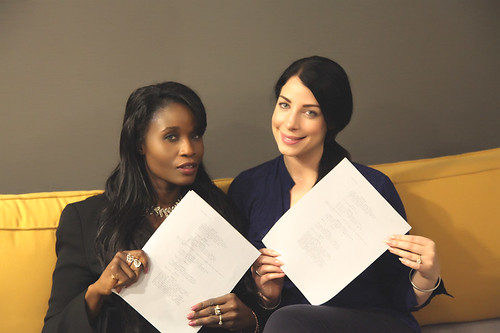
1. **Understanding the Script and Backstory**
To truly embody a character, it is essential to dive deep into the script and unravel the layers of the story’s backstory. The script serves as the blueprint for an actor’s performance, providing the dialogue and stage directions that form the cornerstone of the role. Understanding the subtext—what is implied but not directly stated—is particularly important, as it builds emotional nuance and depth to the portrayal.
Actors need to analyze the script not simply as a collection of lines but as a window into the character’s inner world. This involves identifying the character’s objectives, fears, motivations, and conflicts. Paying attention to these details clarifies how the character fits into the larger story. Furthermore, the relationships between characters must be thoroughly examined, as these dynamics often shape the narrative arc and influence an actor’s choices.
Thorough research into the backstory is equally important. Even if it is not explicitly detailed in the script, backstory enriches the role by adding layers of realism and complexity. Questions an actor should consider include: What past experiences shaped the character’s behavior? What socioeconomic, cultural, or historical contexts could affect their decisions or worldview? Exploring these elements heightens authenticity and connects the actor with the role on a deeper level.
Collaboration with the director and cast members enhances this process, offering alternative perspectives that add dimension to the interpretation. Some may use rehearsal discussions, while others rely on detailed script breakdowns. The ultimate goal is for the actor to fully inhabit the character, creating a seamless merge of fiction and performance that feels lived-in and natural.
Read more about: From Priceless to Pocket Change: 14 Everyday Items That Were Once Exclusive Luxuries of the Wealthy Elite
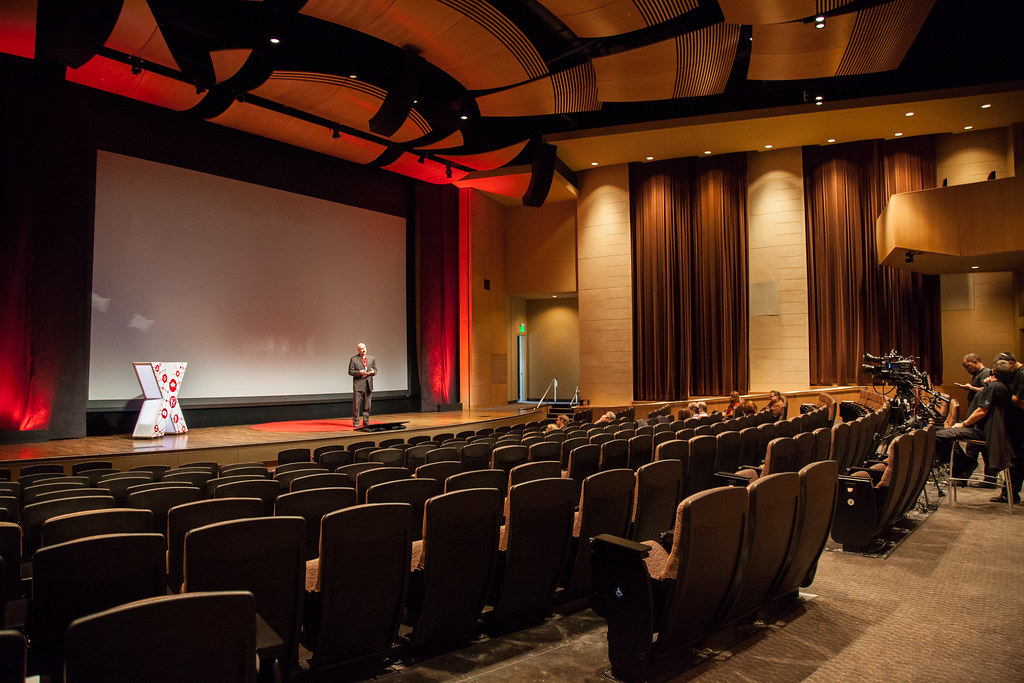
2. **Researching the Setting and Era**
An actor’s ability to immerse themselves in a role often hinges on their understanding of the story’s setting and era. Researching these elements lays a strong foundation for an authentic performance. The process begins with exploring the cultural, social, and historical context of the time period in which the story takes place. This includes understanding how people dressed, spoke, behaved, and interacted in that era.
Actors should investigate key historical events, technological advancements, and societal norms present during the story’s timeline. This level of understanding can influence the way a character might react, think, or speak. For example, a character living during a time of political unrest will likely have attitudes shaped by that climate. Studying the art, music, literature, and popular trends of the era can also provide important insights into the characters’ worldviews and personalities.
It is essential to pay attention to the geographic setting as well. The physical location—whether a bustling city, rural town, or exotic locale—affects how characters navigate their environment. Learning about regional dialects and traditions can be instrumental in preparing for a role that feels grounded in its setting. Combining this knowledge with their craft empowers actors to portray their characters with depth and conviction.
To go deeper, actors may read books or journals written during the era, watch documentaries or films depicting similar settings, or even visit places relevant to the role. Speaking with experts, historians, or cultural consultants can offer additional perspectives that elevate the performance. This comprehensive approach ensures the character feels truly embedded in their world.
Read more about: The 11 Safest Car Seats of 2025: An In-Depth Guide for Parents on Crash Protection and Ease of Use
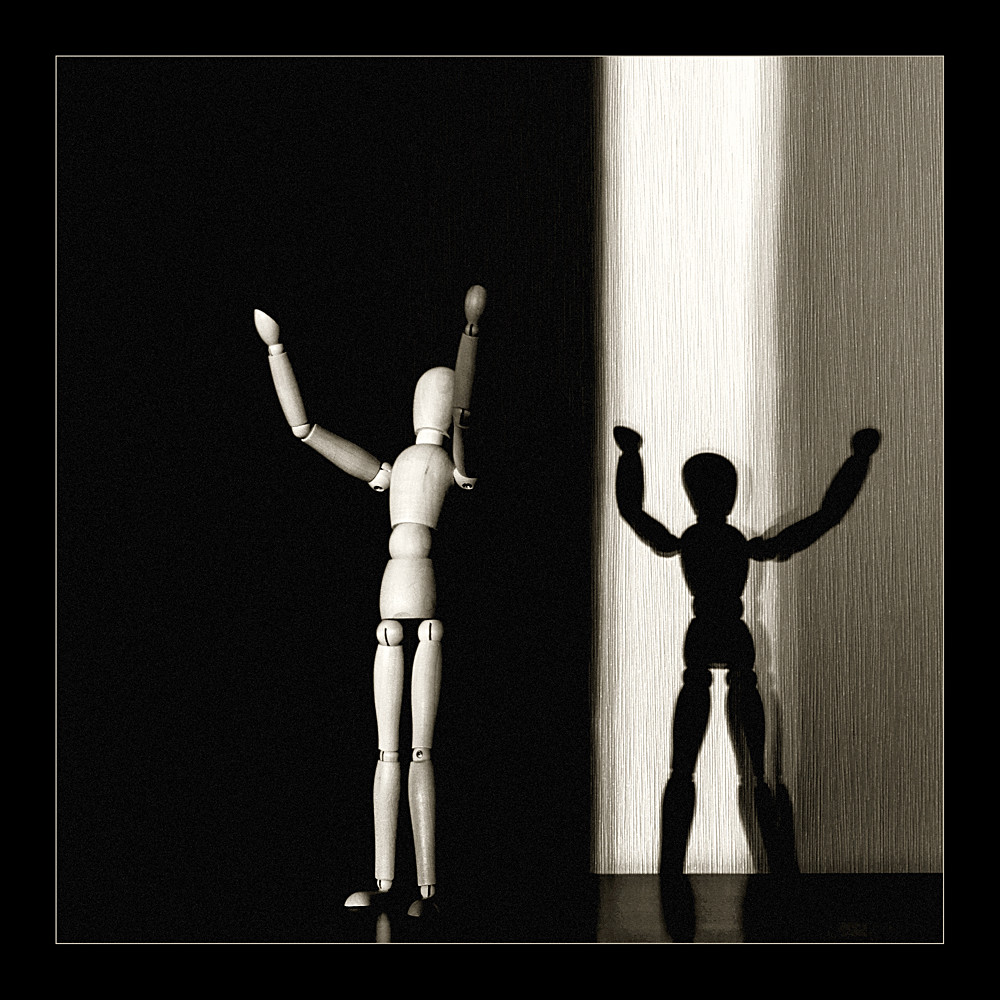
3. **Analyzing Your Character’s Motivations**
Understanding your character’s motivations is fundamental to delivering an authentic and impactful performance. Every character, whether a hero, antagonist, or supporting role, is driven by underlying desires, fears, or needs. By uncovering these motivations, an actor can bring depth and nuance to their portrayal, making every action understandable and every reaction relatable.
Start by reviewing the script carefully. Identify key moments where your character’s actions, words, or decisions reveal their priorities or internal struggles. Pay attention to the context of these moments—consider their relationships with other characters, cultural influences, and the circumstances they face. For instance, if a character chooses betrayal, ask why this act feels necessary or justified from their perspective; motivation often lies beneath the visible actions.
Explore backstory, even when it’s not explicitly stated in the script. What past experiences might have shaped the character’s belief systems, moral compass, or emotional vulnerabilities? Asking questions like “What does the character fear most?” or “What do they hope to achieve?” can illuminate the complexities of their inner world. Use the writer’s cues and subtext as a foundation, then build logical connections where gaps exist.
Consider the character’s immediate objectives versus their overarching goals. Immediate objectives might motivate a single scene, while overarching goals drive the character throughout the story. For example, a character may seek forgiveness in one moment while ultimately striving for personal redemption. Lastly, examine how your character’s motivations evolve over time. A nuanced portrayal requires adapting to shifts in purpose, triggered by pivotal events or interactions. Understanding this growth keeps the portrayal dynamic and engaging, ensuring the audience connects with the character’s journey.
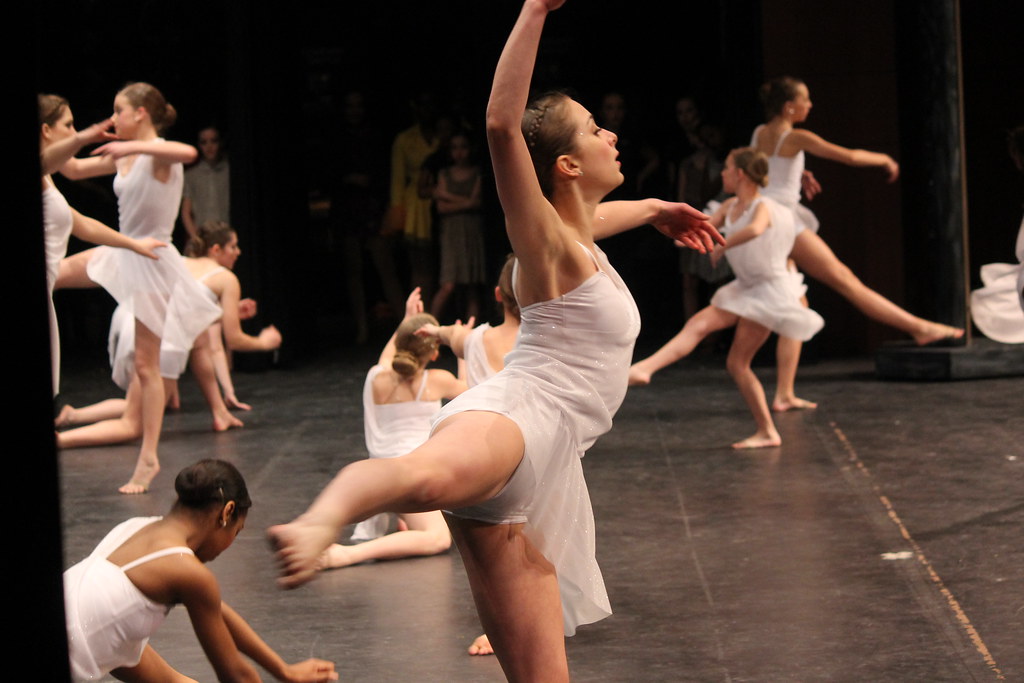
4. **Building a Detailed Character Biography**
Building a detailed character biography serves as a critical foundation for actors seeking to inhabit their roles fully. A well-crafted biography allows an actor to understand the character’s motivations, background, and psychological dimensions. This process goes beyond memorizing lines; it develops a deeper connection with the role and ensures authenticity in the performance.
To create a robust character biography, an actor begins by examining the script carefully. This includes identifying explicit details provided by the writer, such as the character’s age, occupation, family background, and significant events in their life. These details serve as the initial framework upon which a fuller picture of the character is built, offering concrete starting points for deeper exploration.
Actors should also explore unspoken elements of the character by asking reflective questions. These may include: What are the character’s deepest desires and fears? What formative events shaped their perspective on the world? How do they interact with others, and why? These inquiries help fill in the emotional and psychological blanks, bringing the character to life beyond the page.
To further enrich the character, an actor can research external elements relevant to the role. This may involve studying the historical or cultural context of the story, learning about the character’s profession, or understanding how personal traits like body language or speech patterns align with the role. Incorporating these elements allows an actor to make informed choices that enhance performance.
Many actors create a physical or digital document that catalogs the biography. This may include timelines, key relationships, and even a journal written from the character’s perspective. By repeatedly reflecting on this biography during rehearsals, an actor anchors themselves in the role, ensuring a portrayal that feels organic and consistent. Whether on stage or screen, this meticulous preparation enables actors to step into their characters with credibility and depth.
Read more about: Tom Brady’s Post-NFL Fleet: A GQ Look Inside the GOAT’s Million-Dollar Car Collection
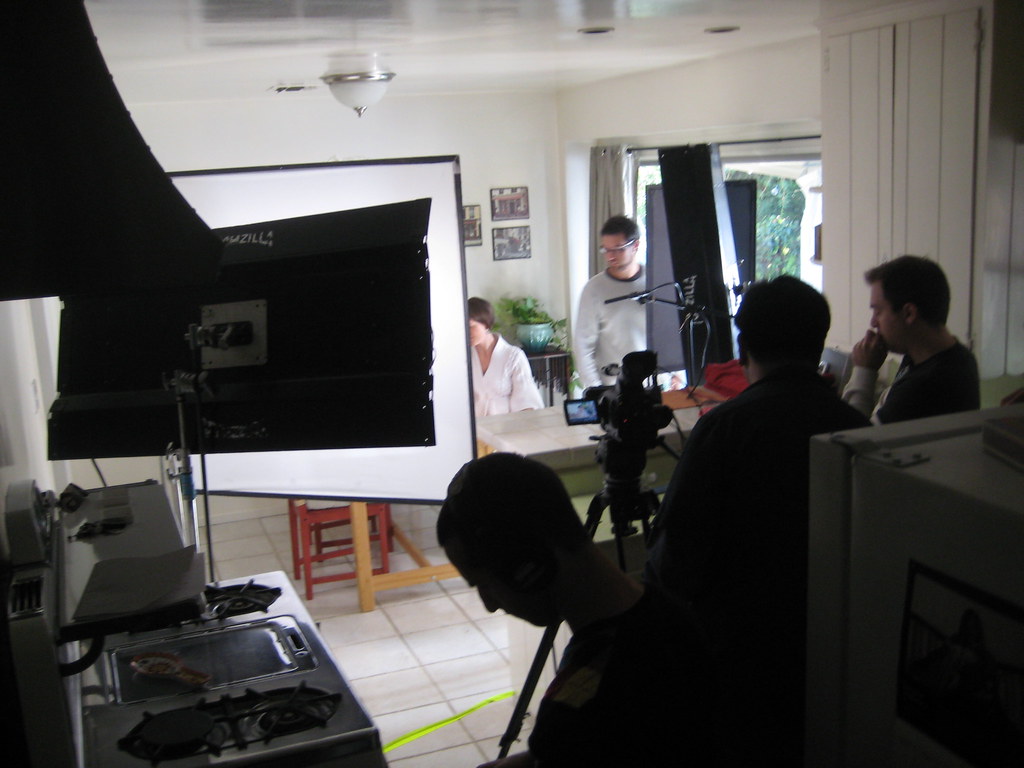
5. **Breaking Down the Script Scene by Scene**
Understanding the script on a granular level is crucial for any actor aiming to deliver an authentic performance. Scene dissection begins with a close read of the material to identify key elements that inform character motivation, emotional transitions, and the overall narrative arc. Each scene provides unique insights, which must be thoroughly explored to ensure no detail is overlooked.
For each scene, identifying the character’s objectives should be the first priority. These objectives often stem from a character’s broader goals within the story and are rooted in the text’s dialogue or subtext. It is equally important to assess the stakes, or what the character stands to gain or lose, as they propel the dramatic tension. Actors must consistently ask the question: “What does my character want in this moment?”
Scenes are often dynamic, featuring a range of emotional beats. Actors should note where these shifts occur, as they demand precise changes in tone, body language, and delivery. These transitions help to create depth, making the character feel more authentic. Reviewing these beats prepares the actor to navigate both subtle and dramatic shifts in performance.
No scene exists in isolation — actors should consider how an individual moment fits into the overarching script. Connections between scenes provide insight into recurring themes, relationships, and patterns. This bigger picture helps in portraying consistency and growth in the character’s journey, ensuring that each scene serves the larger narrative.
Each scene typically involves relationships, whether through dialogue or implied tension. Noting how the character interacts with others clarifies their role and the scene’s dramatic intention. Analyzing conflicts, small or large, sheds light on the emotional undercurrents shaping the narrative. By dissecting a script scene by scene, actors build a foundation to approach their roles with confidence and detail, maintaining authenticity throughout.
Read more about: Beyond the Booth: Unpacking 13 Legendary Music Feuds That Rocked the Industry

6. **Studying Relationships Between Characters**
Relationships between characters are among the most significant aspects of a compelling performance. Understanding these relationships provides depth to the portrayal and grounds the actor’s interpretation in believable dynamics. To effectively study these relationships, it is crucial to evaluate how character interactions shape the story, their emotional underpinnings, and their respective arcs.
Actors should begin by carefully analyzing the script, noting all direct mentions of relationships and implicit cues found in dialogue, stage directions, and subtext. Pay attention to how a character behaves in the presence of others compared to their solo moments. This divergence often reveals layers of vulnerability or power dynamics central to the relationship. Take note of specific relationships where tension or intimacy drives the narrative forward, as these are often key to understanding character motivation and conflict.
Next, explore the historical or social context of the relationships. For example, nuanced connections in a period play may be governed by traditions, hierarchy, or cultural expectations. Contemporary scripts might uncover more informal but equally intricate dynamics, emphasizing emotional or psychological exchanges. Consider how these external factors influence individuals’ emotional responses and behavior toward one another, adding layers of authenticity.
Engaging in collaborative exercises during rehearsals can deepen an understanding of complex relationships. Role-playing scenes from a partner’s perspective provides insight into emotional reciprocity and authenticity, fostering stronger connections on stage. Additionally, structured discussions with the director, fellow cast members, or dramaturgs can clarify misunderstandings and refine relational nuances, ensuring a cohesive ensemble performance.
Finally, an actor must assess how relationships evolve throughout the story. Identifying shifts in trust, power, or affection guides decisions about tone, gestures, and interactions. Such an approach ensures consistency while highlighting pivotal moments that define character connections, making the journey of each character resonate deeply with the audience.
Read more about: Unpacking the Method: The Extreme Techniques and Divisive Practices of Method Acting That Sparked On-Set Drama

7. **Learning from Real-life Observations**
To prepare for an acting role with authenticity, observing real-life behavior is an indispensable technique. Actors often draw inspiration from the people and situations around them to shape their characters in believable and nuanced ways. By studying how individuals express emotions, respond to challenges, and interact with others, actors can bring depth and relatability to their performances.
One approach is analyzing body language and movement. How someone carries themselves can reflect their personality, status, or emotional state. Observing these subtle details in real life—such as a nervous tapping of fingers, a confident stride, or an awkward avoidance of eye contact—enables actors to replicate genuine human behavior on stage or screen, making their portrayals more vivid.
Speech patterns also play a crucial role. Regional accents, tone, cadence, and even word choices reveal much about a character’s background and personality. Listening attentively to conversations in public spaces or during social interactions can provide actors with valuable references to incorporate into their dialogue delivery, ensuring vocal authenticity.
Emotional reactions are another essential focus. Observing how individuals cope with joy, sadness, anger, or fear helps actors create truthful emotional responses. Real-life observation allows performers to see the buildup, intensity, and aftermath of emotions, ensuring their portrayal resonates with the audience on a profound level.
Actors should also pay attention to situational dynamics. For instance, noticing how power shifts in a conversation or how unspoken tension manifests in a group can inform the subtext and relationships within a scripted scene. By translating these real-world observations into their craft, actors construct layered performances that feel genuine and alive, transforming mere portrayals into compelling human experiences.
Now that we’ve covered the crucial foundational work, let’s dive into the practical execution and refinement of performance. This second phase is all about sharpening your tools and ensuring every aspect of your portrayal is polished and ready for the stage or screen. From internalizing dialogue to mastering your physical and vocal presence, these steps are designed to elevate your craft to its most authentic and impactful level.
Read more about: Beyond the Red Carpet: 13 Simple Steps Famous Actors Take to Build an Oscar-Worthy Career!

8. **Memorizing Lines Effectively**
Memorizing lines is undoubtedly a critical element for any actor, moving beyond rote learning to deep internalization. To make dialogue stick, actors should adopt structured strategies that align with their personal learning styles. Repetition, for instance, is highly important; it solidifies the connection between the written words and their recall during the actual performance, ensuring smooth and natural delivery.
A proven approach involves breaking the script into manageable sections. By dividing lines into smaller, digestible chunks, actors can focus on absorbing one piece at a time, preventing overwhelm and facilitating gradual progress. Starting with a single cue and response before advancing to a full scene allows for focused mastery. Reading lines aloud repeatedly also significantly enhances auditory memory and helps establish a natural speech rhythm that feels authentic to the character.
Association techniques can dramatically boost memorization effectiveness. Linking dialogue to specific physical movements, gestures, or even stage blocking helps anchor lines firmly in memory. This physicality engages both the mind and body, creating a multi-sensory experience that strengthens retention. For particularly abstract or complex lines, visualizing the scene or creating vivid mental imagery tied directly to the dialogue can provide additional reinforcement, making the recall process more intuitive.
Moreover, recording your lines and listening back to them offers another powerful tool. Hearing yourself or a scene partner recite lines repeatedly introduces passive learning into your routine, allowing for reflection even while you’re commuting, exercising, or performing other tasks. If you’re a visual learner, physically writing lines by hand or using flashcards can further enhance retention, as this physical engagement with the text aids memory consolidation. Practicing with a partner is invaluable, as it simulates real performance conditions, building critical timing and chemistry, while feedback highlights areas needing more work. Finally, rehearse in your actual performance space whenever possible to associate lines with specific spatial cues, ensuring smoother delivery when it counts.
Read more about: Unlock Your English Voice: 12 Core Phrase Categories for Confident Communication and Deeper Understanding
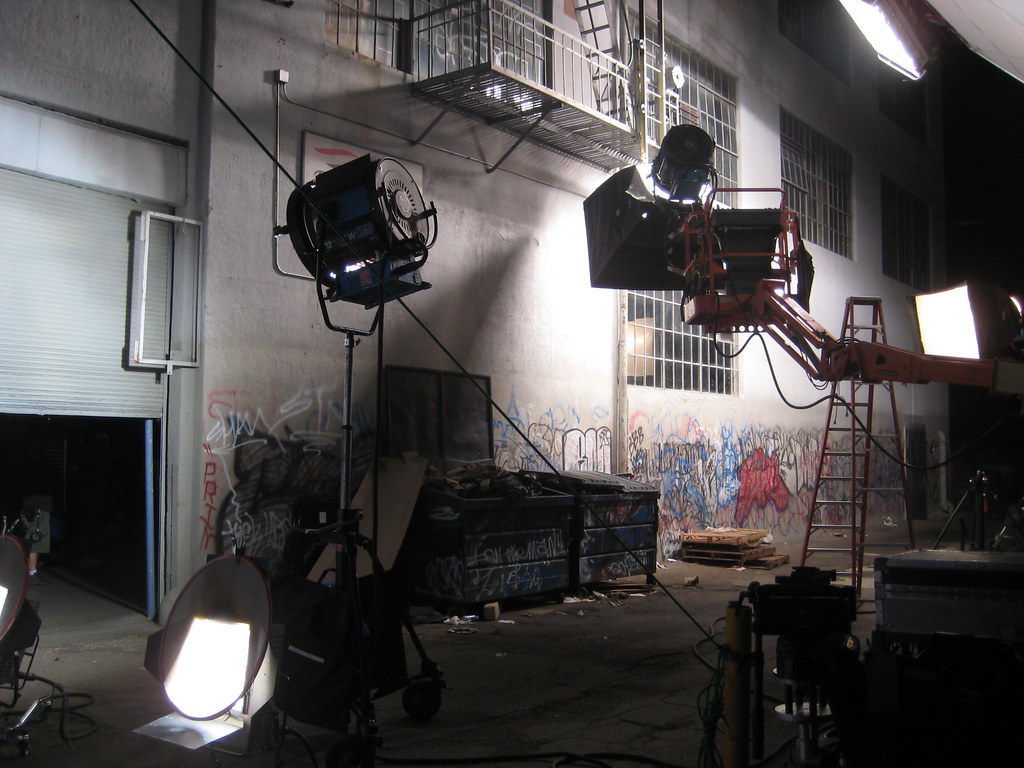
9. **Mastering Voice and Dialect**
Mastering your voice and dialect is absolutely essential for delivering a performance that is both authentic and truly memorable. Actors must meticulously tailor their vocal delivery to perfectly match their character’s background, emotional state, and social context. Voice training is key to sharpening vital elements like enunciation, pitch control, projection, and tonal variety, ensuring every word resonates effectively with your audience and conveys its intended meaning.
On the other hand, mastering a dialect involves much more than just adopting an accent; it’s about accurately reproducing specific speech patterns, cultural nuances, and the precise intonations characteristic of the character’s origin. When these two skills—voice and dialect—are honed together, they significantly enhance audience immersion, making your portrayal far more credible and deeply convincing.
A robust starting point for vocal mastery includes consistent warm-ups and breathing exercises, which are crucial for building vocal stamina and promoting relaxation. Deep diaphragmatic breathing, lip rolls, gentle humming, and stretching facial muscles all help to loosen tension and dramatically improve articulation. These preparatory exercises are indispensable, readying an actor’s voice for the rigorous demands of rehearsals and intense performances. Beyond preparation, understanding and prioritizing vocal health is paramount; proper hydration, adequate rest, and strictly avoiding habits like excessive yelling or smoking are vital safeguards for long-term vocal longevity and performance capability.
For effective dialect training, actors typically collaborate with recordings, detailed linguistic breakdowns, or specialized dialect coaches. They meticulously analyze subtle vowel changes, precise consonant usage, and the unique rhythm to accurately mimic the speech’s specific cadence. Repetition, shadowing native speakers, and practicing tongue twisters within the desired dialect are all proven methods to ensure accuracy and fluency. Recording practice sessions, followed by critical playback for self-assessment, allows for continuous refinement and improvement. Additionally, exploring sophisticated tools like the International Phonetic Alphabet (IPA) can provide precise pronunciation guidance, while subtle adjustments to pacing and word emphasis further align the dialect with the character’s distinct identity. A disciplined and consistent approach to both voice and dialect work is what ultimately guarantees authenticity, leaving an indelible impact on your audience.
Read more about: The Enduring Saga of the American Robin: An In-Depth Look at North America’s Most Prolific Songbird

10. **Mastering Body Language and Movement**
Effective body language and nuanced movement are truly fundamental tools for any actor aiming to craft a believable and utterly compelling performance. It’s crucial for performers to meticulously consider how every aspect of their physicality — from a subtle gesture to a grand movement — powerfully conveys emotions, clarifies relationships, communicates status, and articulates intentions directly to the audience. A deep understanding of the profound impact of non-verbal communication is what empowers actors to embody their characters with genuine authenticity and conviction.
To begin this journey, actors should conduct a thorough analysis of how their character’s posture, specific gait, and distinctive gestures naturally align with their personality and current emotional state. For example, a character brimming with confidence might carry themselves with an open, upright posture, exuding self-assurance. Conversely, a nervous character might instinctively fidget, exhibit restless movements, or actively avoid direct eye contact, revealing their inner turmoil. Actors can then purposefully practice mirroring these precise physical traits during rehearsals, meticulously ensuring that all their movements are consistently aligned with the character’s deepest motivations and internal world.
Observation is another absolutely essential practice that cannot be overstated. By closely watching real-life individuals in various situations or studying the nuanced performances of other skilled actors, performers gain invaluable insight into the subtle intricacies of body language. Paying meticulous attention to how people genuinely express a range of emotions such as profound sadness, explosive anger, or exuberant joy can provide a rich source of inspiration for crafting deeply nuanced and emotionally resonant performances that truly captivate an audience. These real-world observations serve as a powerful wellspring for authentic character portrayal.
Actors frequently find physical warm-ups to be incredibly helpful in preparing their bodies for the demands of movement. Engaging in practices such as stretching, yoga, tai chi, or the Alexander Technique significantly enhances flexibility, improves balance, and refines alignment, granting actors greater control over their spatial awareness and physical presence. These purposeful exercises are also crucial for reducing physical tension, which in turn enables freer, more natural, and uninhibited movements on either stage or screen, allowing the character’s physicality to flow authentically. Furthermore, incorporating improvisation exercises and specialized movement workshops can significantly hone an actor’s adaptability and spontaneity, equipping them to respond naturally and dynamically within diverse and evolving scene situations. Collaborating with a choreographer or a dedicated movement coach is particularly beneficial for mastering specific physicalities, stylized movements, or complex sequences that a role may demand, ensuring every physical choice is intentional and impactful.
Finally, actors must continuously refine their non-verbal communication through diligent practice, often rehearsing in front of mirrors or recording their performances for critical review. This reflective process allows them to meticulously evaluate and enhance the authenticity of their body language, ensuring that every gesture, every subtle expression, and every deliberate movement robustly supports the overarching story being told. The effective and deliberate use of physicality profoundly enhances an actor’s ability to forge a deep connection with the audience, making performances significantly more engaging, memorable, and ultimately, unforgettable.
Read more about: Protecting Our Little Ones: 14 Essential Steps for Flawless Car Seat Installation

11. **Exploring Emotional Depths Safely**
The process of accessing and portraying deep, raw emotions is an incredibly powerful tool for any actor, yet it demands careful and conscientious preparation to prevent emotional burnout or a detrimental detachment from their own well-being. To begin, actors must establish a robust emotional foundation, meticulously studying the character’s backstory, core motivations, and intricate relationships. This profound understanding allows them to connect authentically with their character’s experiences while diligently maintaining a clear, healthy boundary between their personal emotions and those of the role they are embodying.
One highly effective method for accessing emotional depth is through memory recall or substitution, a technique deeply rooted in various acting methodologies. By thoughtfully reflecting on personal experiences that evoke feelings similar to those required in a scene, actors can channel genuine emotion into their performance. However, it is absolutely crucial to approach this technique with immense thought and self-awareness, ensuring that the recalled memories do not become overwhelming or re-traumatizing. Practicing mindfulness or specific grounding exercises beforehand can be incredibly helpful in mitigating any unintended or adverse emotional effects, keeping the actor centered and in control.
Actors can also skillfully utilize external stimuli, such as carefully chosen music, evocative imagery, or specific sensory objects, to help conjure the necessary emotions. For instance, listening to a particular piece of music that perfectly matches the tone and emotional landscape of a scene can effectively create the desired emotional state without requiring a deep dive into personal, potentially sensitive memories. This method offers a valuable and safer alternative for actors seeking to connect emotionally with their roles without risking their personal emotional reserves. Such an approach demonstrates a practical, problem-solving mindset crucial in a demanding profession.
To further safeguard emotional well-being, establishing a deliberate post-performance routine is absolutely essential. Techniques such as journaling your experiences, engaging in calming meditation, or integrating physical exercise can significantly help actors transition gracefully out of intense emotional states. Additionally, proactively seeking guidance from experienced acting coaches or qualified therapists who are specifically equipped to address the unique emotional challenges of the profession ensures sustainable and healthy practices over the long term. Ultimately, the exploration of emotional depths must always prioritize safety, striking a careful balance between the relentless pursuit of authentic performance and the unwavering commitment to mental health, empowering the actor to thrive both on and off stage.
Read more about: The Gritty Truth: 14 ‘Dirty’ Jobs That Pay Six Figures and Might Just Change Your Life!
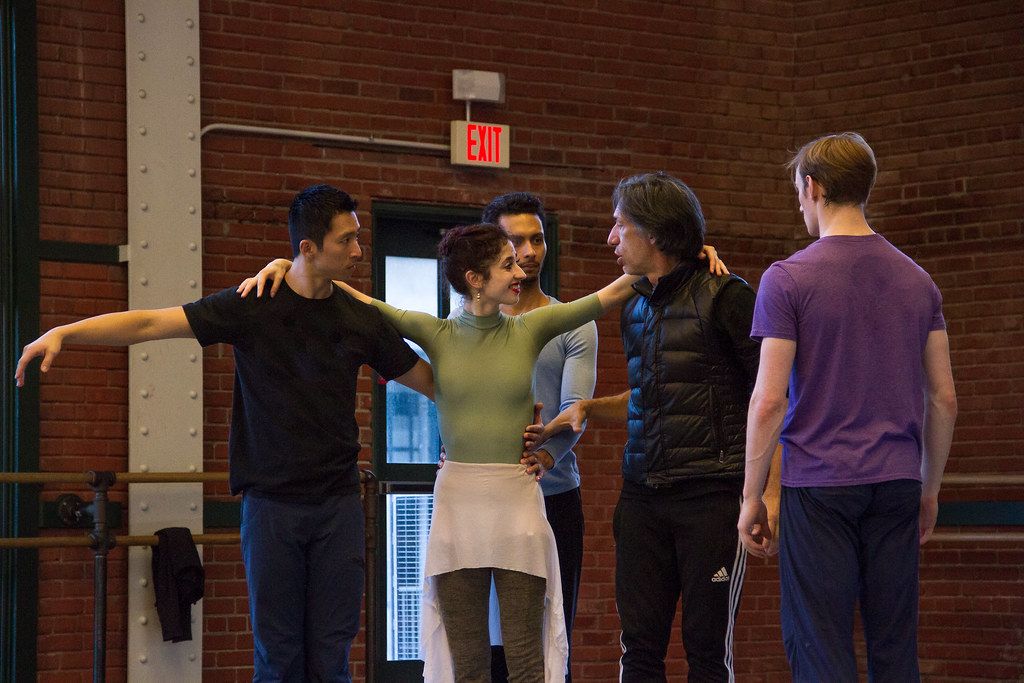
12. **Investing in Rehearsal Time**
Rehearsal time is not just a luxury; it is absolutely integral to developing a truly nuanced and authentic performance. Actors must dedicate this precious time not only to memorizing lines but crucially, to internalizing their character’s intricate emotions, underlying motivations, and complex relationships. By dedicating sufficient time to detailed, focused practice, performers can uncover unique and compelling interpretations, discover natural and organic delivery rhythms, and proactively address any challenges or obstacles that are bound to arise during the production process.
Breaking scenes into smaller, more manageable units during rehearsals is a highly effective technique that facilitates deeper analysis and understanding. This methodical approach allows the actor to intensely concentrate on key emotional beats, subtle shifts in dynamic, and specific objectives without feeling overwhelmed by the entire script. Repeatedly practicing specific sections or pivotal moments sharpens technical precision, ensuring consistency and reliability under various conditions, whether live or on set. Furthermore, prioritizing blocking and physicality early in the rehearsal process solidifies movement patterns, freeing up creative energy to flow without the distraction of logistical concerns.
Actors often discover immense benefits from rehearsing with diverse partners or under slightly altered conditions. By consciously doing so, they become significantly more adaptable and resilient to unexpected changes that inevitably occur during live performances or on a fast-paced set. Alternating interpretations of a scene fosters a remarkable flexibility and helps keep the material fresh and vibrant, actively preventing performances from becoming stale, rote, or overly mechanical. This proactive approach ensures a dynamic and responsive portrayal.
Effective rehearsal should also meticulously include the exploration of subtext—the unspoken, underlying meaning that lies beneath the spoken words. This deep understanding profoundly enriches an actor’s portrayal, adding layers of intricate depth to interactions and ultimately creating a far more engaging and compelling performance for the audience. Additionally, actively experimenting with timing, pacing, and variation in vocal tone during rehearsals often unlocks entirely new dimensions for creative expression, allowing the actor to discover unforeseen nuances in their character’s delivery.
Finally, actors greatly benefit from judiciously separating solo rehearsals from collaborative work. Personal time can be effectively utilized to refine monologues, perfect line delivery, or meticulously develop a detailed backstory for their character. In contrast, group rehearsals emphasize the vital aspects of chemistry and synergy within the ensemble. Consistent and dedicated investment in rehearsal time not only cultivates unwavering confidence but also highlights areas for growth and ensures that the actor is thoroughly prepared for high-pressure environments, empowering them to deliver their very best.
Read more about: You Won’t Believe What’s Inside: 13 Wildly Unique Custom Features Making Touring Musicians’ Luxury Vans Insane!

13. **Practicing Improvisation for Flexibility**
Practicing improvisation is an absolutely essential exercise for actors who aspire to build remarkable flexibility and quick responsiveness in their performances. This crucial skill empowers actors to think rapidly on their feet, adapt seamlessly to unexpected changes, and inject an undeniable authenticity into their characters. By consistently incorporating regular improvisation exercises into their preparation routines, performers can significantly refine their instincts, dramatically enhance their creative capacities, and maintain unwavering focus even under the most intense pressure, making them truly formidable on stage or screen.
One highly effective improvisation exercise is role-switching, where actors take turns portraying different characters within a short scene, responding naturally and spontaneously to one another’s cues. This dynamic activity powerfully challenges performers to step boldly out of their comfort zones and react with genuine spontaneity, all while remaining steadfastly true to the overarching narrative. Another immensely popular and beneficial exercise involves “Yes, And…” drills, which rigorously train actors to enthusiastically accept and creatively build upon any given situation. This powerful technique not only promotes deep collaboration but also helps them master the art of supporting their scene partners while continuously driving the story forward with momentum and purpose.
Improvisation also provides invaluable preparation for actors to respond effectively and gracefully to unforeseen on-set challenges, such as a momentarily dropped line or a missed cue from a fellow performer. By regularly practicing scenarios where circumstances shift unpredictably, actors significantly strengthen their ability to adjust seamlessly without ever derailing the integrity of the scene. For instance, diligently practicing cold reads—where performers are tasked with interpreting unfamiliar script passages on the spot—tests their interpretative skills and trains them to respond with profound authenticity to new and unexpected material, sharpening their core acting instincts.
Furthermore, utilizing various improv games can unlock and expand an actor’s emotional range in surprising ways. Exercises like hot seating, where actors are intensively questioned while remaining fully in-character, demand lightning-fast thinking and profound emotional access, thereby significantly enriching the depth of their character development. Additionally, time-bound improvisation challenges encourage decisive action and ensure that creative choices are made confidently and without hesitation, fostering a sense of artistic courage. Through consistent improvisation, actors not only develop crucial technical flexibility but also cultivate an invigorating sense of playfulness that keeps scenes vibrant, alive, and utterly engaging. Regular practice cultivates spontaneity, an invaluable quality that profoundly enhances performance consistency, regardless of the unique demands of the setting or medium.
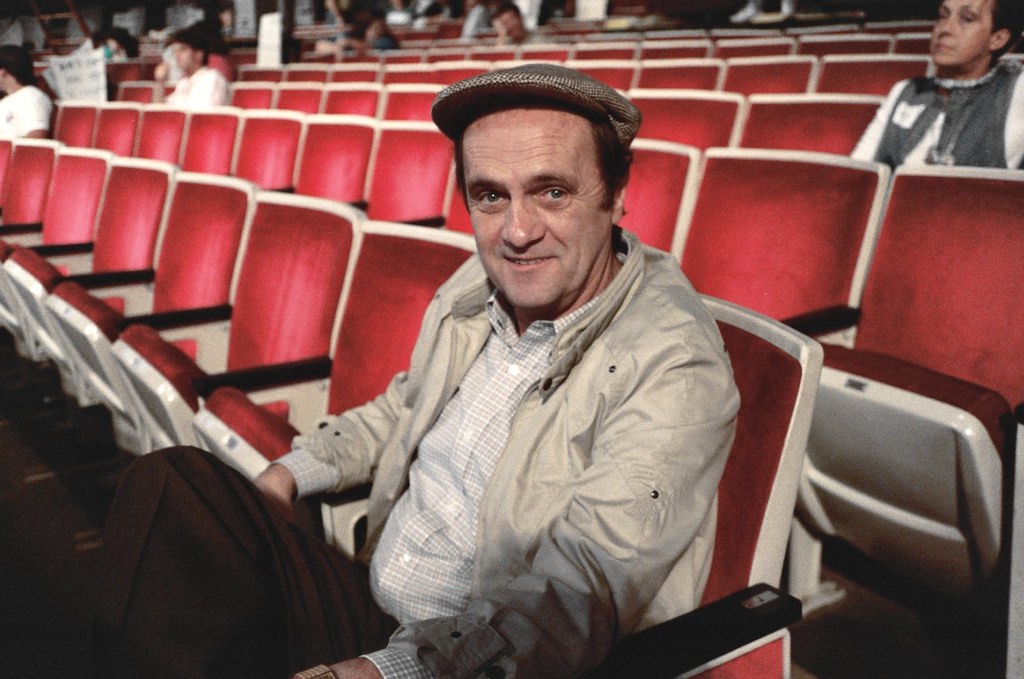
14. **Using Visualization Techniques**
Visualization is an incredibly valuable and often underutilized tool for actors seeking to connect deeply with their characters, enhance emotional engagement, and bring unparalleled authenticity to their performances. By harnessing the power of mental imagery, actors can effectively step into their characters’ world, vividly visualize scenes unfolding, and intimately imagine the precise thoughts and feelings that are driving their actions. This powerful technique allows for a significantly richer and more nuanced portrayal, making their roles feel inherently more believable, dynamic, and profoundly real to the audience.
Actors can begin this transformative process by creating incredibly detailed mental images of their character’s immediate environment. This encompasses the setting itself, the prevailing mood or atmosphere of the scene, and crucially, how their character organically interacts with and moves through that specific space. For example, meticulously imagining the texture of the furniture, recalling the distinct aroma in the air, or even envisioning the specific weather conditions at a particular moment can profoundly help in grounding the performance. Such rich and specific details have the remarkable ability to evoke genuine physical responses in the actor, influencing subtle elements like posture, specific movements, or nuanced expressions that truly reflect the character’s lived experience and internal state.
Another highly effective strategy is to consistently visualize the intricate inner life of the character. Actors might mentally revisit specific moments from their character’s past, meticulously building a backstory that powerfully informs their present actions and reactions. Visualizing pivotal life events, intensely emotional highs and lows, or even the mundane, day-to-day activities provides a far fuller, more holistic understanding of the character’s core motivations and intricate psyche. This mental journey helps to bridge any gaps in the script, allowing the actor to fully inhabit the character’s reality.
To forge an even deeper emotional connection, actors may also visualize personal experiences from their own lives that strongly resonate with the character’s feelings. By mentally revisiting similar emotions they have personally experienced or by picturing hypothetical scenarios that elicit those same feelings, they can effectively tap into genuine expressions that perfectly align with the demands of the role. This practice not only strengthens emotional recall but also expertly helps bridge the gap between the actor’s own reality and the character’s emotional landscape. Incorporating guided visualization exercises into regular rehearsals or dedicated mindfulness sessions can further refine and deepen this powerful technique. With consistent, deliberate practice, visualization actively fosters unwavering focus, sparks profound creativity, and builds an instinctive, organic connection to one’s character, ultimately becoming an indispensable tool in any actor’s comprehensive preparation arsenal. Mastering this technique empowers performers to transform their interpretations into truly unforgettable experiences for the audience.
Read more about: Beyond the Buzz: 20 Everyday Foods That Won’t Boost Testosterone, But Deliver Real Health Advantages
And there you have it – the complete blueprint for transforming into a dramatic role, from the foundational groundwork to the refined execution. These 14 steps, practiced by the pros, offer a clear, actionable path to creating performances that resonate deeply and authentically. Remember, every great transformation begins with a single, deliberate step. Now go forth and create something unforgettable!



